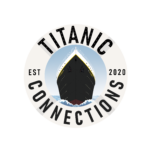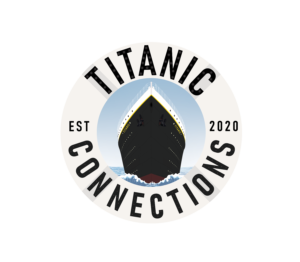Wreck Thursday - The Bridge
There are few more evocative locations on Titanic’s wreck than the remains of her Bridge. Watching the 1987 National Geographic documentary “Secrets of the Titanic,” filmed over 1985, 1986, and 1987, it is striking how Dr. Robert Ballard and those working with him believed that Titanic’s wreck would be far more intact. Ballard can be heard, while planning a dive, saying that he hoped to be able to “enter the Bridge” with his ROV Jason Jr.
Of course, we now know that the Bridge is no longer an enclosed space as it was in 1912. While we can never be completely certain of exactly how the Bridge was destroyed during the bow section’s descent to the ocean floor, the pattern of the debris and the location of various parts of Bridge and its structural elements can give us some clues.
t is likely that the foremast, which was swept backward and down as the ship plunged to the seabed, did some damage to the wooden roof and front of the Bridge, as well as potentially damaging the steel bulwark on which it now rests. Water rushing through the space may also have played some part in ripping away items inside.
The real destructive force, however, appears to have been the downblast that resulted from the ship hitting the ocean floor with great force. This downward rush of water caused untold amounts of damage to the entire bow section, and it is likely that it completely destroyed the wooden structure of the Bridge, blasting it apart and downward.
The debris of what was once the bridge tells at least some of the story of what happened to this space after it dipped below the surface. A mechanical linkage between the wheel on the Navigating Bridge and the telemotor in the Wheelhouse once ran along the ceiling of the Navigating Bridge. Today, it rests in a twisted mess on the floor of the Wheelhouse. Other structural elements are scattered on A-Deck below the Bridge. Had the rush of water swept the roof of the Bridge away, these items would be more likely found in the debris field somewhere astern of or away from the wreck itself. Instead, they lay close to where they were originally located.
Today, there are two readily-recognizable features of the Bridge visible on the wreck. One is the low lip formed by the teak baseboard of the Wheelhouse, providing us an outline of that space and giving us our bearings. Directly aft of this lip is one of the most photographed and iconic spots on the wreck: the bronze telemotor that once connected the wheels on the Bridge to the massive steering gear located under the poop deck. It is the only item of equipment on the Bridge today that remains exactly where it was in 1912, marking the location from which Quartermaster Robert Hichens tried desperately to turn the Titanic away from the iceberg. As such, it has become the most popular spot for visitors to the wreck to place a plaque in memory of those lost and marking their visit. These rest in a row along the teak baseboard that once formed the front of the Wheelhouse.
A closer inspection of the area of the Bridge and the space around it reveals much more. Check out the images to tour some of these smaller finds.
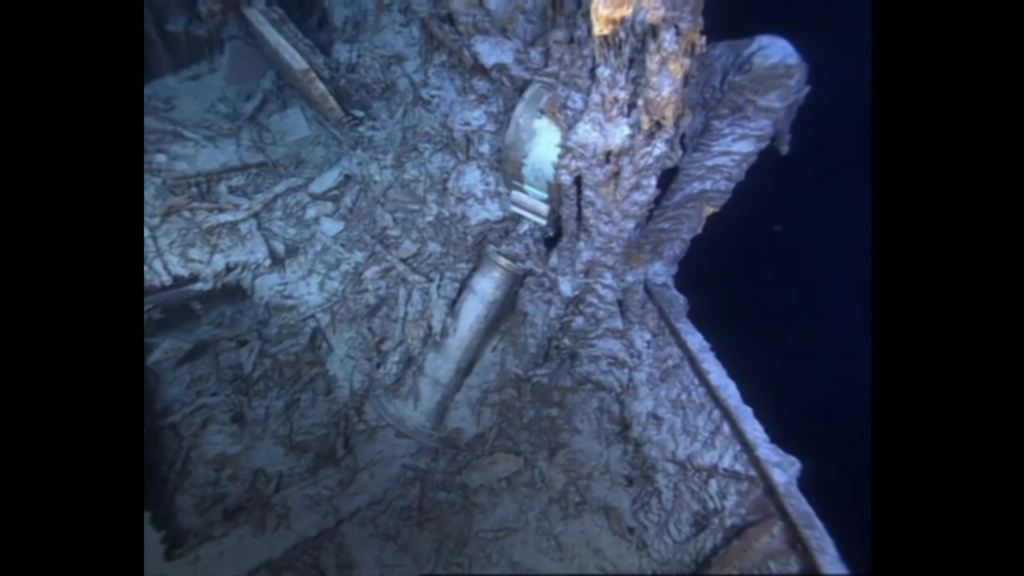
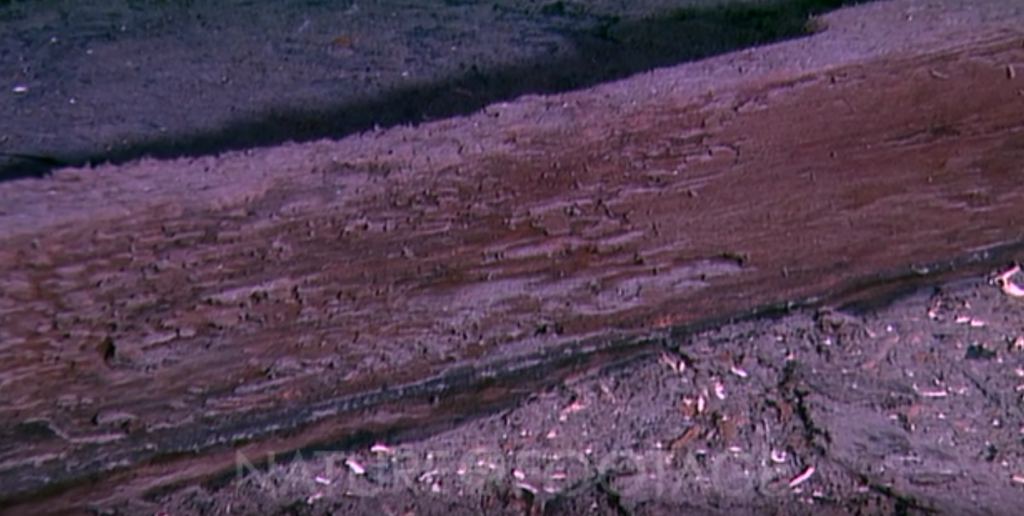
One of the engine order telegraphs from the Navigating Bridge now rests on the port side of A deck, the drum separated slightly from the base. This proximity, much like that of the mechanical linkage noted earlier, indicates that the bridge was mostly destroyed by the downblast and not entirely by the falling mast or the rushing water. This is from 1996. The telegraph was recovered shortly after.
A black cable, either for electricity or for the Wheelhouse telephones, runs along the forward teak baseboard of the Wheelhouse. This is from 2003.
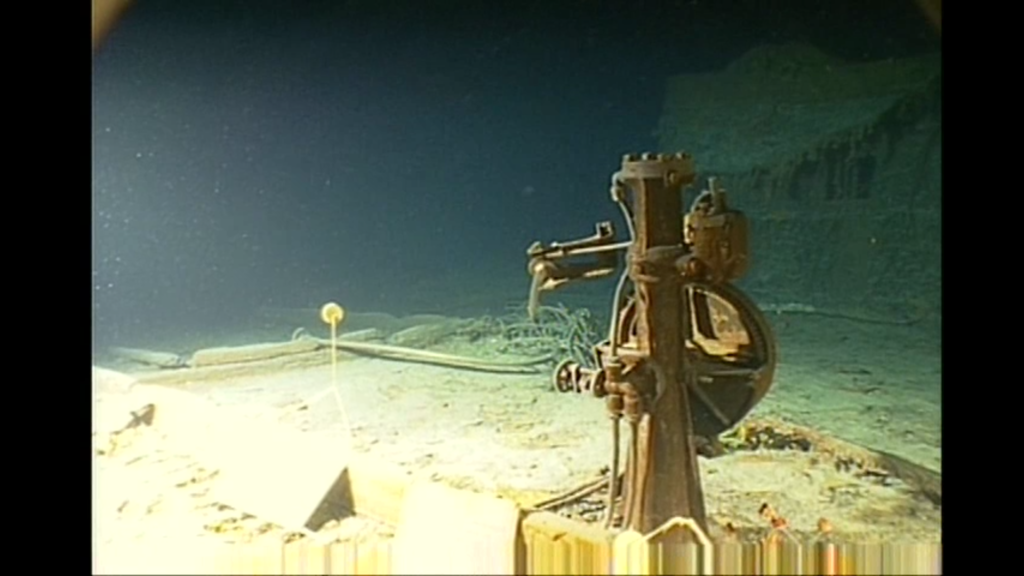
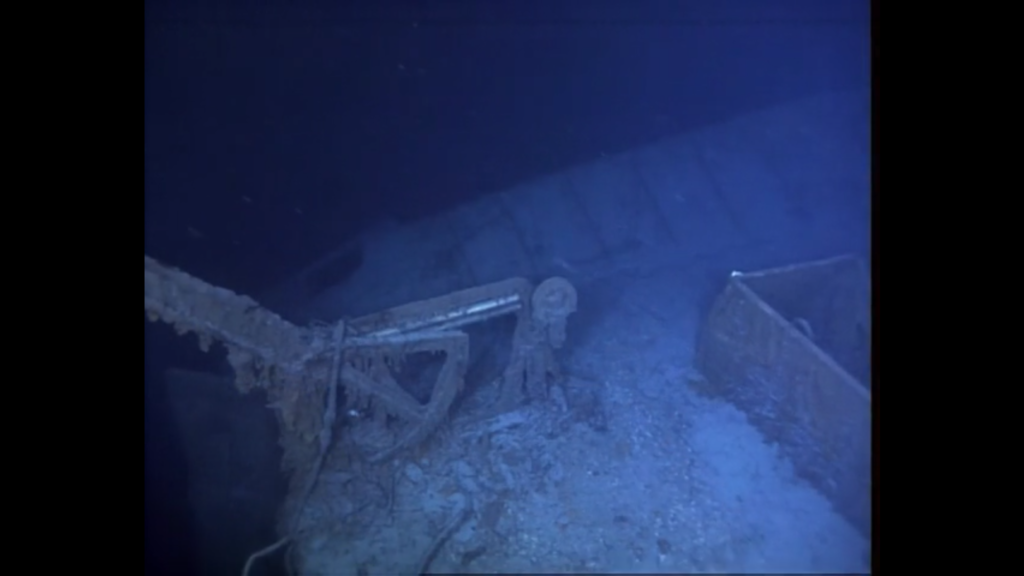
The bronze telemotor stands in the foreground, and some of the numerous plaques can be seen there as well. Directly to the left of the telemotor and in the center of the image is the mechanical linkage mentioned earlier. This is from 2003. In the background on the right, a wall of the Chartroom and Pilot’s Cabin, located behind the Wheelhouse, is visible.
The collapsed bulwark of the port bridge wing can be seen in the background of this image, with the officer’s stairwell to the right and the cranked out davit for the port side emergency boat and Collapsible D to the left. This is from 1996.
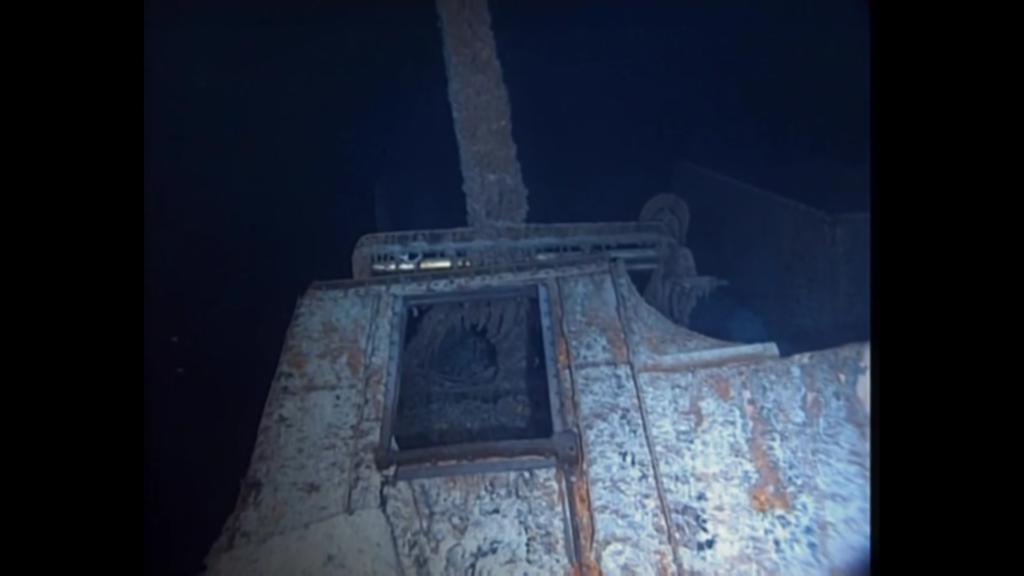
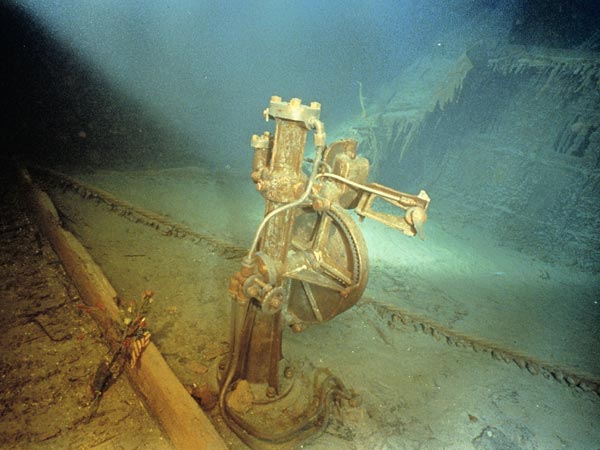
The collapsed rear wall of the starboard bridge wing now rests next to the cranked-in davit for the starboard emergency boat and Collapsible C. The davit was cranked in to connect Collapsible A and launch it after it was freed from the top of the Officer’s Quarters, but Titanic took her final plunge before this could be done and the boat was washed off the deck. This is from 1996.
From 2003, this image shows the telemotor once again, but just behind it and resting diagonally across the Wheelhouse floor is a rigging line from the fallen foremast. Today, this is tangled with the linkage which connected the wheelhouse and navigation bridge helms. Also of interest is the base of the telemotor, including the various cables running from it into the deck.
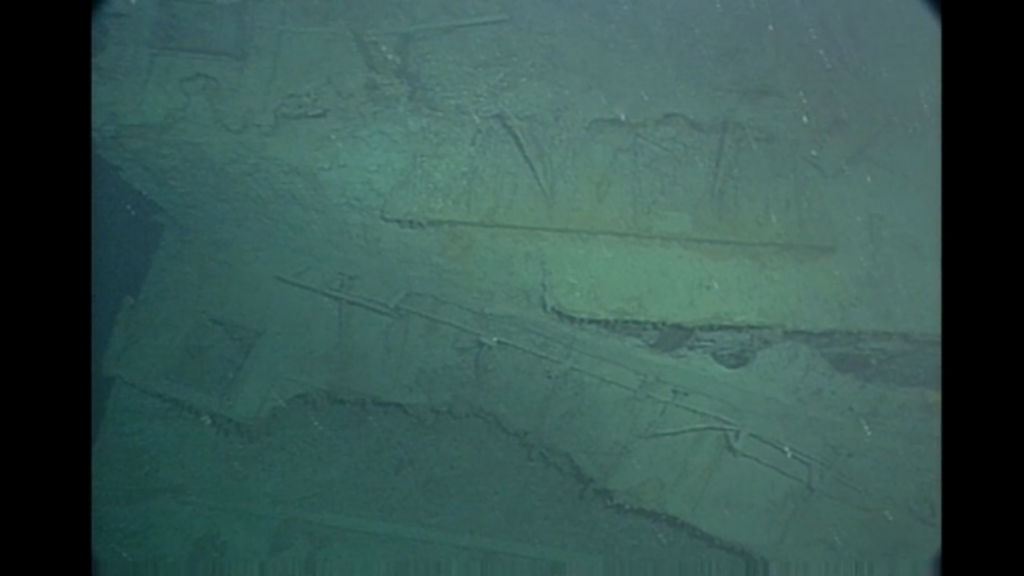
Also from 2003, this image shows the collapsed bulwark and forward wall of the wing cab on the starboard side. The remains of the raised platform that once ran along the base of the bulwark to allow an officer to step up and look over it can be seen here, as can the remains of the bulwark that connected with the aft wall of the wing cab (upper right of the image). The window for the forward wall of the wing cab is at the far left.
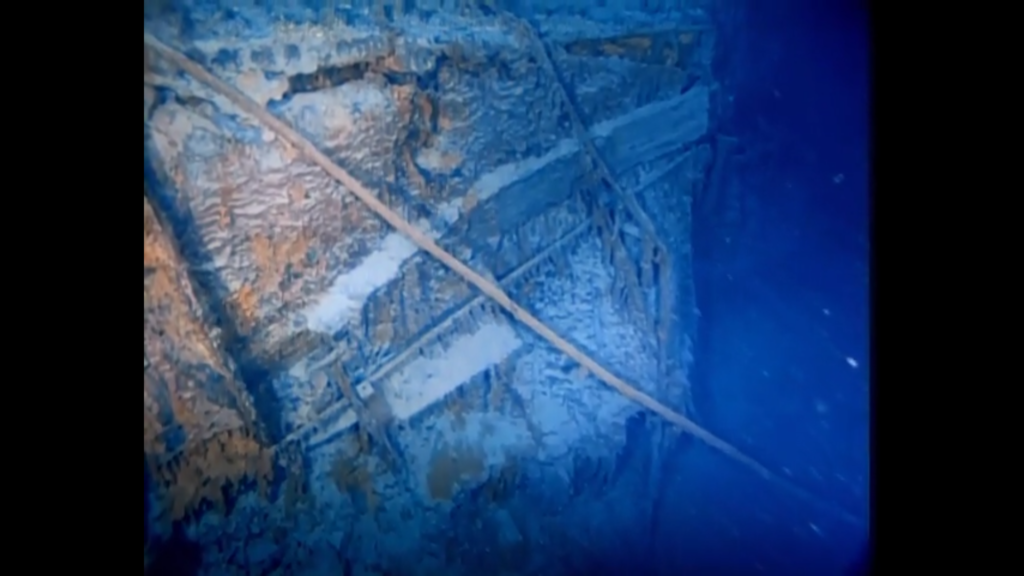
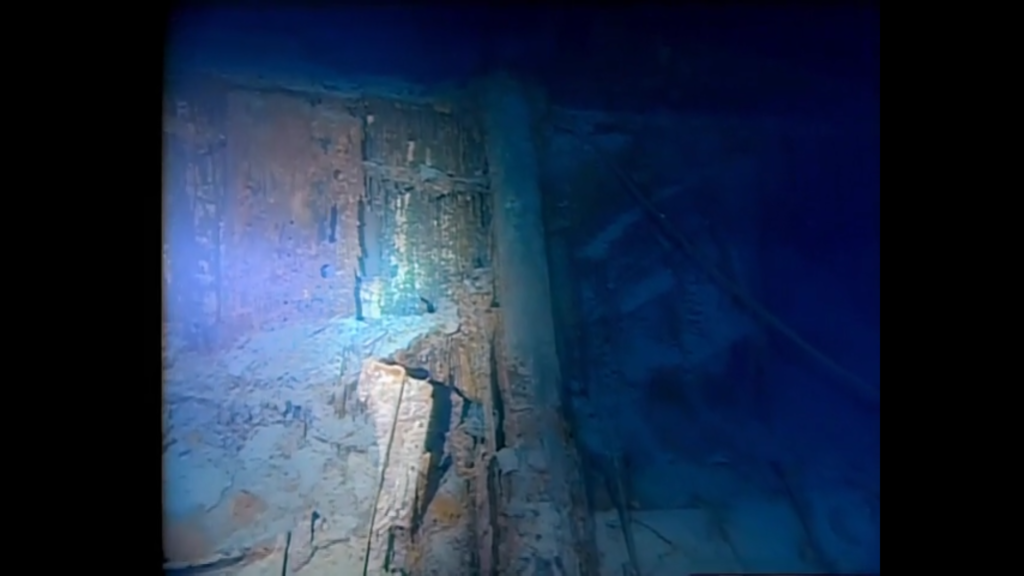
In these views of the remains of the Bridge found on A deck, there are many bits and pieces seemingly randomly tossed there by the downblast. Among these are subflooring, structural beams, parts of the collapsed bulwarks, the teak caprails that ran along the top of those bulwarks, the footboards that ran at their base, more rigging lines from the mast, and other pieces of Bridge equipment. Both of these images are from 1996.
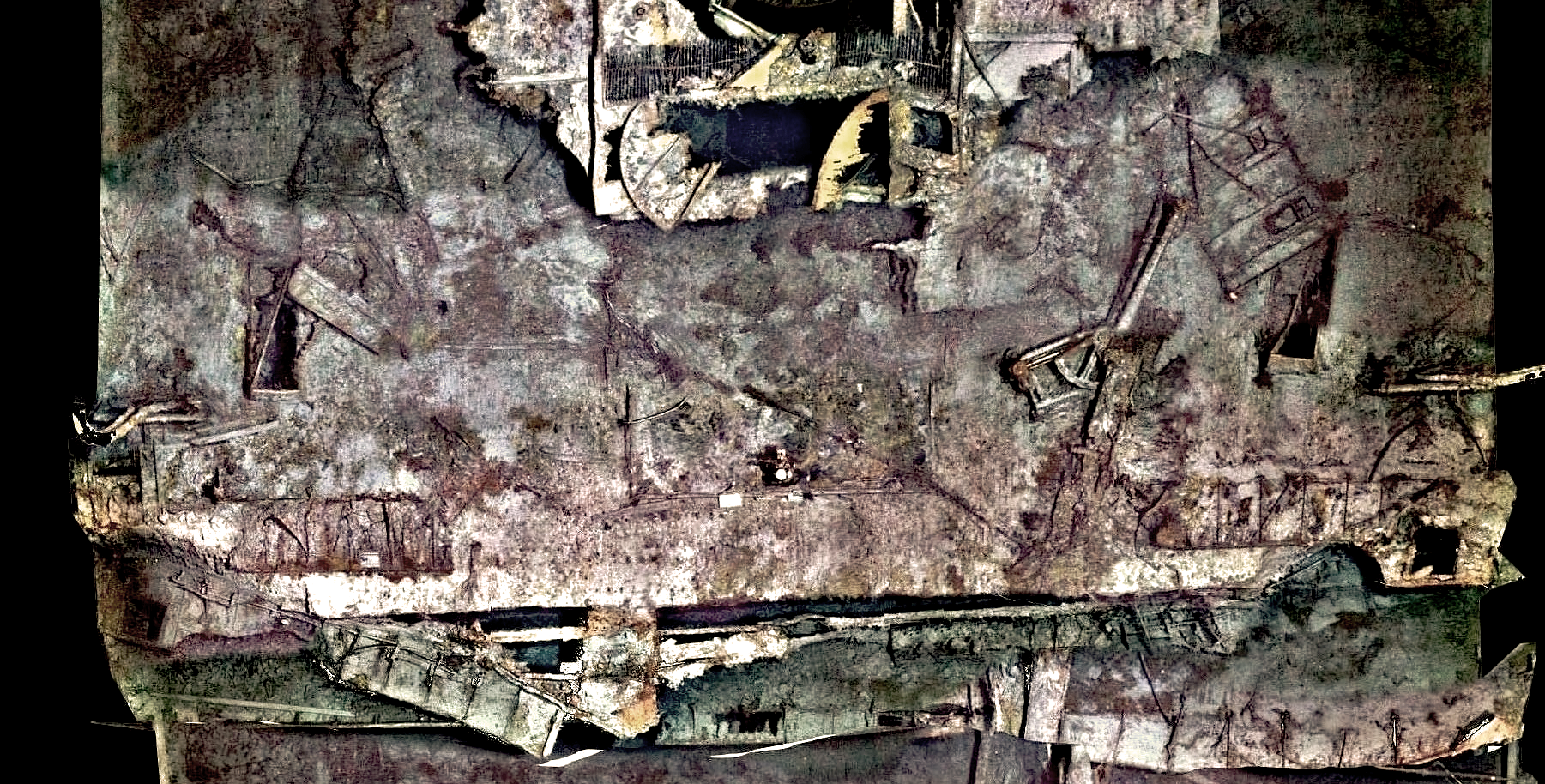
In this mosaic of the Bridge from directly above, assembled from multiple images, we can get a sense of the utter destruction of this area by the downblast. A lifeboat davit rests in the top center of the image in a space that originally would have been just outside the Wheelhouse. The teak baseboard of the Wheelhouse and the telemotor in the center of the image allow us to orient ourselves. The collapsed wing cabs are visible at the top and bottom of the image. The front of the Navigating Bridge, along with the curvature of the front of the boat deck, are completely gone, with debris from these areas now resting on the deck below. This would have once been the location of the five order telegraphs, the binnacle, and the wheel.
Post By: Nick DeWitt
Consultation: Spencer Kent
Image Credits: WHOI, IFREMER, RMS Titanic Inc., NOAA
